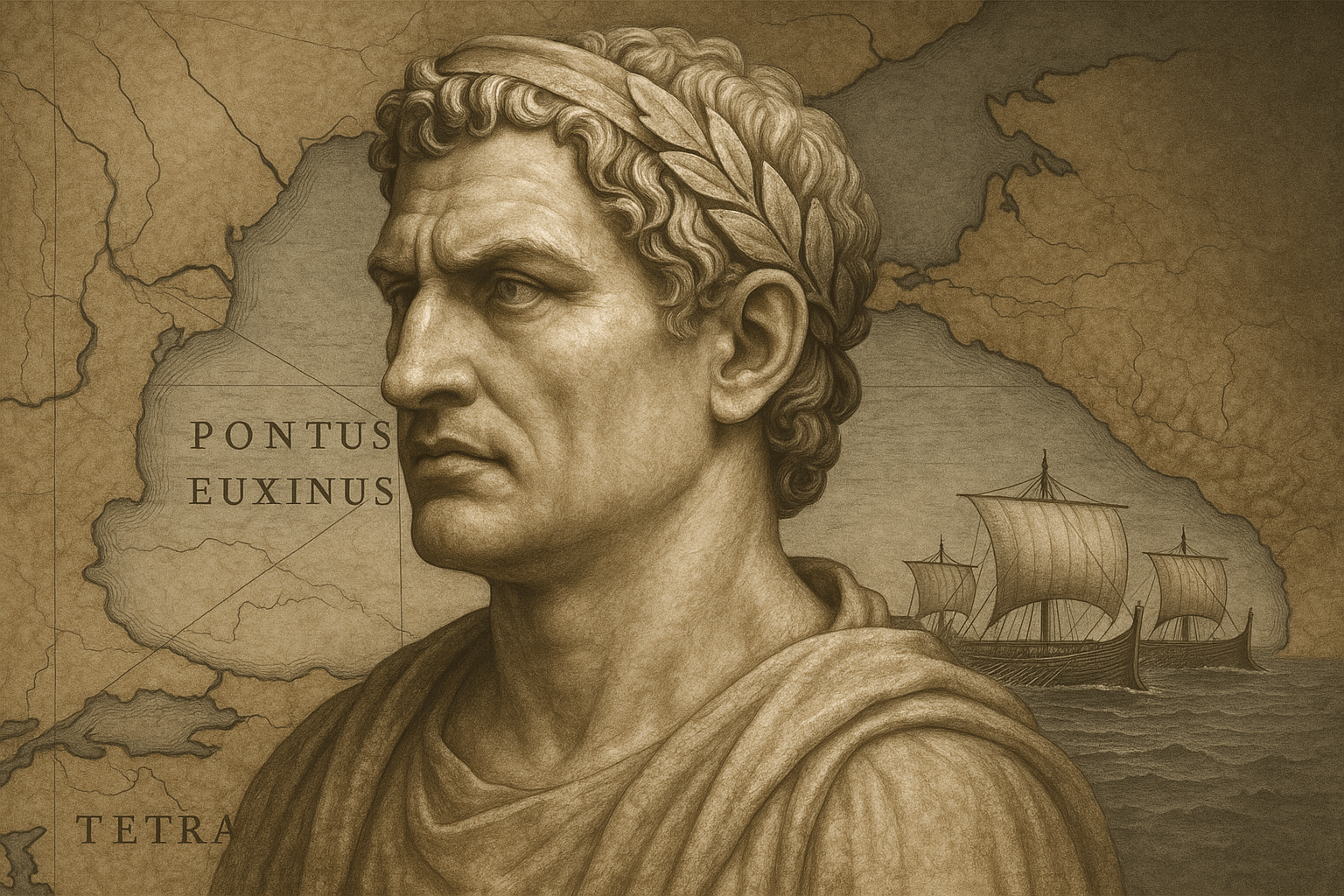From Persian Roots to a Hellenistic Power
The Kingdom of Pontus wasn’t born from nothing. It emerged in the turbulent aftermath of Alexander the Great’s death, a period when his vast empire was carved up by his ambitious generals. Located on the southern coast of the Black Sea (in modern-day Turkey), Pontus was founded around 281 BC by Mithridates I Ktistes (“The Founder”), a Persian nobleman who could trace his lineage back to the Achaemenid Empire.
This dual heritage was the secret to Pontus’s strength. It was a Hellenistic kingdom, deeply infused with Greek culture, language, and military organization. Yet, it retained a strong Persian administrative structure and cultural identity. This fusion created a dynamic and powerful state that controlled vital trade routes, rich farmlands, and abundant mineral resources. For nearly two centuries, Pontus grew in wealth and influence, patiently building its power while the major Hellenistic empires to its south exhausted themselves in constant warfare.
Enter Mithridates VI: The Poison King
The story of Pontus’s clash with Rome is inextricably linked to one man: Mithridates VI Eupator Dionysus. His life was the stuff of legend. Ascending to the throne as a boy after his father’s assassination, Mithridates lived in constant fear of plots, especially from his own mother. According to ancient sources like Appian and Cassius Dio, he fled into the wilderness, where he spent years hardening his body and mind.
Most famously, he was said to have obsessively studied poisons, ingesting small, non-lethal doses of various toxins to build a legendary immunity. Whether tale or truth, this practice earned him the enduring nickname: the “Poison King.”
When he returned to seize his throne, Mithridates was no longer a frightened boy. He was a towering, ambitious figure who saw himself as the savior of the Hellenistic world. To the east, he saw a fractured collection of Greek cities and kingdoms being systematically absorbed by an insatiable, corrupt Roman Republic. He envisioned a great eastern empire, led by him, that would throw the Roman “barbarians” back into the sea.
The Mithridatic Wars: A Clash of Titans
Mithridates didn’t just dream of empire; he built one. He expanded his control around the entire Black Sea, annexing territories and forging alliances with fearsome Scythian and Sarmatian tribes. With a massive army and a powerful fleet, he was ready to challenge Rome directly. The resulting conflict, spanning three wars over more than two decades, pushed the Republic to its limits.
The Asiatic Vespers and the First War (89-85 BC)
The spark came in 88 BC. After years of Roman encroachment and provocation, Mithridates made a terrifying move. He orchestrated a coordinated, single-day massacre of Roman and Italian civilians living in Anatolia. Known as the Asiatic Vespers, this event saw an estimated 80,000 men, women, and children slaughtered by locals who had grown to despise Roman tax collectors and businessmen. The act was a brutal declaration of war, and it sent shockwaves through Rome.
The Republic dispatched one of its most capable and ruthless generals, Lucius Cornelius Sulla. The war raged across Greece and Anatolia. Sulla famously sacked Athens, which had sided with Mithridates, but he was unable to deliver a knockout blow. Distracted by political turmoil back in Rome, Sulla negotiated a hasty peace, forcing Mithridates to retreat but leaving his kingdom and army largely intact. The first round was over, but the rivalry was far from settled.
The Final Showdown (73-63 BC)
After a brief, inconclusive second war, the final and most decisive conflict began in 73 BC. For years, the Roman general Lucullus scored impressive victories, repeatedly defeating Mithridates’s armies and pushing him to the brink of collapse. Yet, the wily king always found a way to escape and rally new forces. Frustrated by Lucullus’s inability to end the war, a politically charged Rome turned to its new superstar general: Gnaeus Pompeius Magnus, or Pompey the Great.
Given an unprecedented command over the entire East, Pompey systematically cornered Mithridates. In 66 BC, he inflicted a crushing defeat on the Pontic army. Mithridates, once the master of Anatolia, was forced to flee for his life, escaping to his northernmost realms in the Crimea.
A King’s Defiant End
Even in exile, Mithridates refused to admit defeat. From his fortress in the Bosporan Kingdom, he plotted an audacious new campaign: a barbarian-backed invasion of Italy itself. But his grand plans were his undoing. His war-weary soldiers and even his own favored son, Pharnaces II, had had enough. They revolted against the aging king.
Trapped in his palace in 63 BC, Mithridates chose to die on his own terms. According to the legend, he tried to take his own life with the poison he had mastered, but his famed immunity rendered it useless. In a final, desperate act, he ordered one of his loyal bodyguards to kill him with a sword. So ended the life of Rome’s most enduring enemy.
With Mithridates gone, Pompey reorganized the entire East, annexing Pontus into a Roman province and establishing an order that would last for centuries. The dream of a great Hellenistic empire to rival Rome died with its king. Today, the Kingdom of Pontus is a footnote in many history books, but for a generation, it stood as a powerful testament to the fact that Rome’s march to empire was never truly inevitable. It was won in blood and fire, against formidable foes like Mithridates VI, the Poison King of Pontus.
